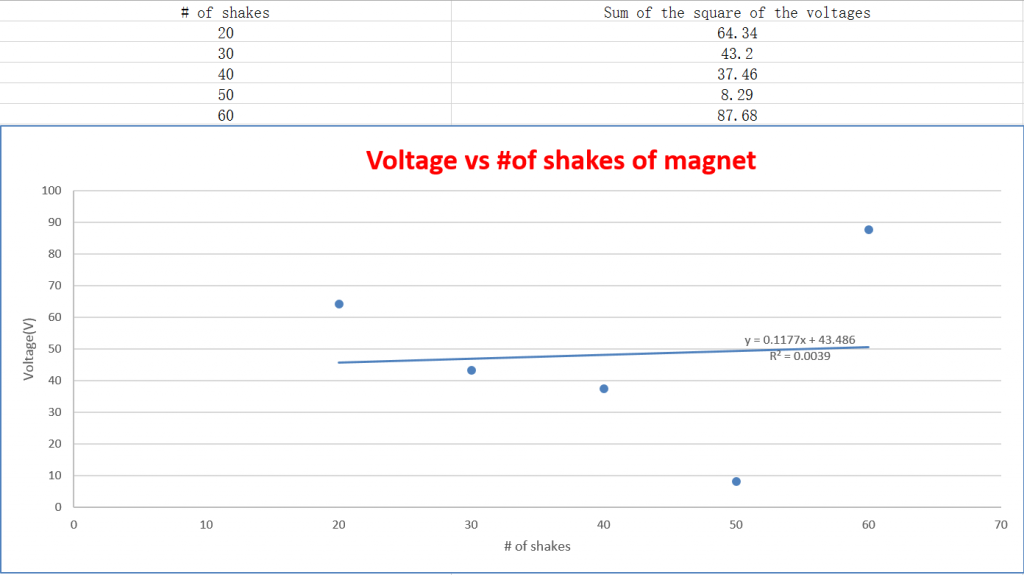Generator Lab
On February 12th, 2016, my teammates Baoying, Ruan and I performed a generator experiment. The generator consists of a magnet, which will travel back and forth through Our through a coil of wires. Our goals of the experiment was to study the Faraday’s Law, which is stated that changing magnetic fluxes through coiled wires generate electricity. And also the relationship between the numbers of generator shook, and the sum of the squares of the voltages the generator generated in a 30 seconds interval.
In order to perform this experiment, we used a voltage probe, a NXT and of course, the generator. We connected the wires from the generator to the probe, and connected probe with NXT, and finally, connected probe to the computer.
Now, we opened the generator_lab.vi on the LabVIEW, and it would record the voltage the generator generated for us. And we were ready to shake. In the first time, I shook the generator 20 times in 30 seconds. And then, we opened the data recorded on excel. We saw 30 data in the excel, which meant our experiment was successful. We then did another 4 sets of experiment with 30, 40, 50 and 60 times in 30 second interval.
After that, we opened the excel and rearranged the data to make it clear. Then, we used the excel power function to square the voltages from each set of experiment, and summed up all of the square of the voltages in each set. Therefore, we were able to construct a graph about the relationship between the sum of the square of the voltages and number of shakes. Following is the graph and data from the experiment.

When we did the experiment, we had different people shaking the generator every time. And when we did 20 shakes, and 60 shakes, we shook the tube at a faster rate compare to others. And the 50 shakes, our girl did it at a very slow rate. As a result, we concluded that the voltages generated from the generator was depended both on the rate of shaking, and the times of shakes. In particular, the faster we shake the tube, the more voltage will be generated. And the more times we shake, the more voltage will be generated.
In conclusion, the experiment was very interesting, and fun. And it also reminded me of taking calculus courses. Because I did not have a lot of knowledge about physics, but the instructor usually gave examples of flux and vector filed in physics world. Which I had no clue what was going on. After the experiment, I now understand much more about both calculus and physics.
One Response to Generator Lab